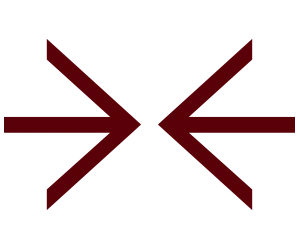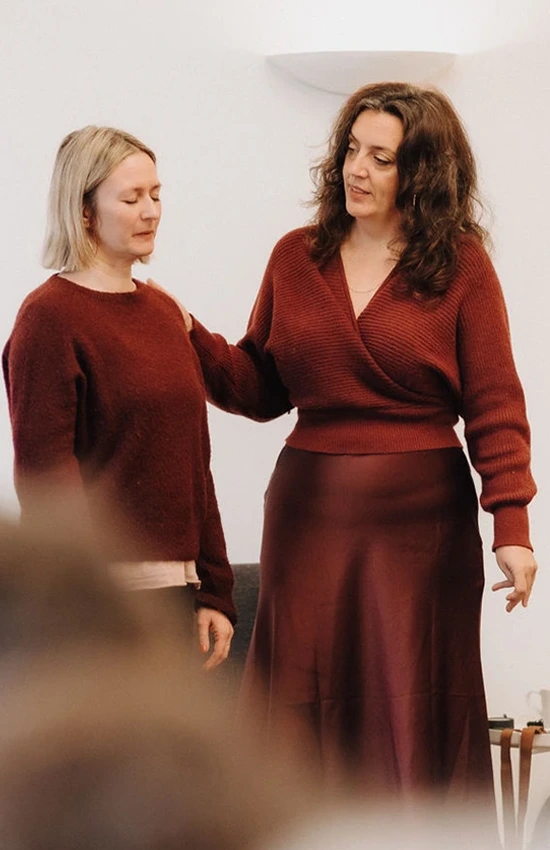Ancestral healing is a topic that is finally becoming socially acceptable. Especially through the scientific field of epigenetics, a lot has started to shift in recent years. But ancestral healing is something that has existed with us for thousands of years. Most importantly, it is a method that can help us change and transform recurring limiting family patterns.
Family patterns are behaviors, beliefs, and emotions that are passed from one generation to the next. They are anchored in the lineage, so to speak. Family patterns are not necessarily negative; they can also have positive and supportive effects on a person. They influence not only how we see the world but also how family members interact with each other and shape their lives.
Family patterns are like a knitting pattern.
They dictate how we take the next stitch in relationships.
The factors that lead to the formation of a family pattern are diverse. For example, they can arise from genetic predisposition, shared experiences, traumatic events, or cultural influences. So it may happen that two people go through the same experience, but deal with it differently — sometimes based on their existing family pattern. How one handles the situation decides whether the event becomes a pattern or not.
It is therefore not possible to generally say that event X always leads to intergenerational pattern ABC. I once had a client whose maternal line: all women gained weight after age 40, whether they wanted to or not. Behind this was the experience of multiple ancestors of extreme hunger, of having to feed many children alone, and of making sure everyone gets through. This led to the women in the line starting to eat over their hunger by around age 40.
And that then became a pattern — “in our family, all women gain weight after 40.”
So it is always worth looking behind the scenes and not immediately attributing patterns to one of the causes mentioned above. In the case of weight gain, people tend to say: “It’s in our genes.” And then the topic is considered closed. I have learned, and experienced many times, that a further look can work wonders — especially when it concerns physical patterns or health issues that are so easily brushed off.
It is always worth looking behind the scenes.
Because that look can work wonders
when it comes to recognizing causes.
Family patterns don’t only appear physically—they can also show up in how conflicts are handled, in communication and relational patterns inside or outside the family, or in financial patterns or in the way we structure our life path. A classic example is how shocked a family system can be when a woman is the first in her line to start her own business, or when she wishes to keep working despite having children, even though it’s not strictly necessary.
For me, independence was one such issue. My two parents, both civil servants, were totally overwhelmed and didn’t really know how to deal with it. Something like that had never happened in our family. So much uncertainty around choosing a career. That, in turn, made me more insecure, and it took some time for me to find my way in self-employment. I was really harsh with myself, because I was thinking in “employee-system” terms.
Until I found out that my great grandfather was a successful businessman in Berlin, who had met and fallen in love with my great grandmother in St. Petersburg. Suddenly I knew: I can do it. And I have him by my side. Since then many things have become much easier. So patterns don’t always need to be passed on for a long time to have influence.
It was always like this’ is rarely true.
Because there is always a beginning, the first stitch.
And everything can unravel from there.
To understand the dynamics of family patterns, it helps to engage with the concept of transgenerational transmission. Transgenerational transmission forms the basis for family patterns and refers to the process through which behaviors, emotions, and beliefs are passed from one generation to the next. Sometimes they seem to skip a generation and only become visible later.
An important thing to understand is that this process often—but not always—happens unconsciously. And it can have both positive and negative effects on individuals and family life.
Negative family patterns can appear as unhealthy relationships, addiction problems, mental illnesses, or recurring conflicts. They can be passed down over generations and even become more intense if they are not recognized and healed. On the positive side, they can also be resilience, good self-esteem, stable relationships, healthy ways of handling money, and similar traits that are visible across generations.
Family patterns are not only negative.
Self-worth, stable relationships, good handling of money – all these too can be family patterns.
In ancestral healing we see ourselves as part of a larger whole. We acknowledge that our ancestors have influence on our present life. A central point here is becoming conscious of our own family history. This happens by engaging with the stories, traumas, and experiences of our ancestors—and recognizing them. One doesn’t need a history book or a family tree for this.
What is needed is the willingness to connect with an open heart and trust the information that comes through during work with the ancestors. Because when we connect with them and their stories, we can gain deeper insights. In this way, family patterns can be recognized, released, and healed.
Ancestral healing can be a deeply transformative experience. Through the healing of patterns, it can help us transform the negative ones and strengthen the positive ones. We can live healthier relationships and actively support our own growth and well-being. It is a journey to the roots that helps us understand ourselves better and unlock our full potential.
Curious – then feel free to start your journey right here.
In Sisterhood,






